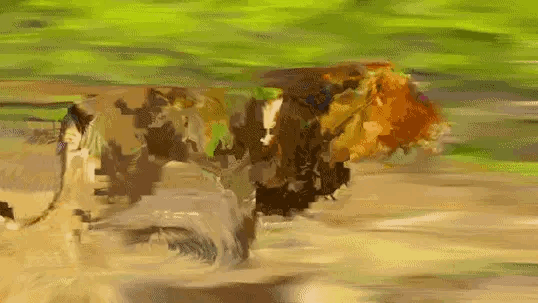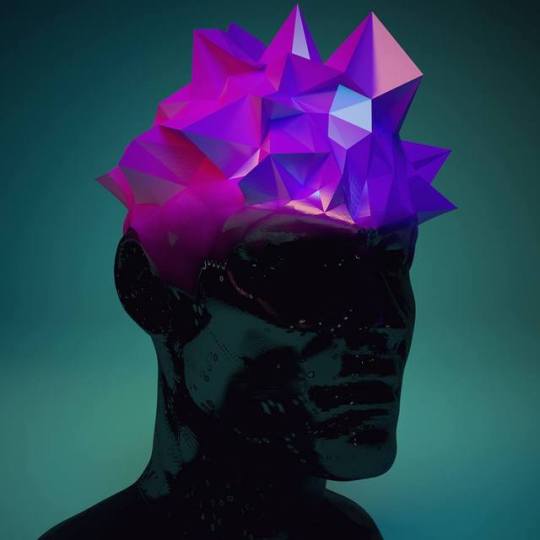#denis volnov
Photo

- Instagram
#glitch#glitch art#art#denvolnov#denis volnov#joker#joaquin phoenix#joaquin phoenix joker#todd phillips#joker 2019
219 notes
·
View notes
Photo



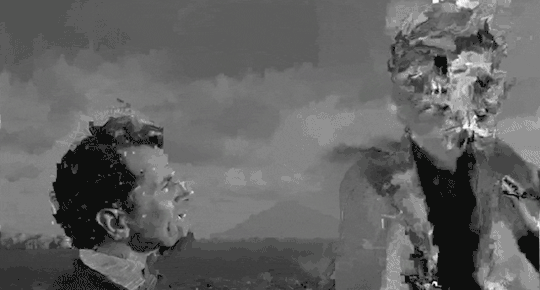




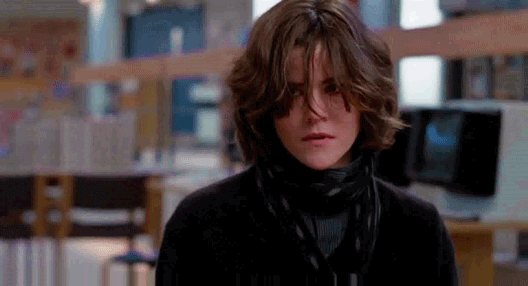
Denis Volnov: Glitch Sculpting in Time
Denis Volnov was born in Leipzig in East Germany and now lives in Russia where he works as an Art Director and CG artist, although his self described profession is of that of a Programmer and Mathematician. His primary tool is python scripts and as for his work, he states: “Glitch is largely unexplored form of art, I am attracted by the invention of new forms and techniques” He transforms the short clips he takes from popular movies into intense impressionistic visual experiences that can at times be otherworldy in their beauty.
More unique art on Cross Connect Magazine:
Twitter || Facebook || Instagram
Posted by David
448 notes
·
View notes
Video
youtube
Glitch Art by Denis Volnov http://denvolnov.tumblr.com
https://soundcloud.com/ulisessco
3 notes
·
View notes
Photo
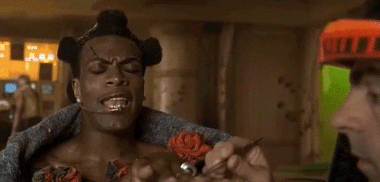
Denis Volnov
#glitchartistscollective#gac#glitchart#glitch#glitchgif#gif#glitch aesthetic#digital art#datamoshing
208 notes
·
View notes
Text
Summary for 10/4
Critical Glitches and Glitch Art by Michael Betancourt:
In this web journal, Betancourt esentially discusses, talks about, and summarizes, certain aspects and historical events over the concept that is glitch art. Some of his main arguments include what glitches of these pieces of art can actually be, how the audience perceives them, and as a result, discusses the idea that the perception of a glitch can entirely rely on how the viewer views it, or listens to it in the grand scheme of the whole piece. Betancourt also discusses glitch art and its relation to more modern conceptions and passive audiences. Another big point brought up in the article by the author is that he uses other sources to point out the important fact that what humans actually hear and understand in the digital medium is far more detached and unlike the actual digital machinery and code to begins with. This leads Betancourt to list down a key important note in his article taken from artist Curt Cloninger in his book, The Glitch Reader(ror):
“ The term 'glitch art' might apply to all domesticated glitches and all wild glitches that have been 'captured' and recontextualized as art.
Bentacourt ends his article by stating that it is important for pieces such as these to have a strong theoretical foundation so that the rest of the piece can function well and serve some sort of purpose to the audience.
NOTE: THE FOLLOWING SUMMARIZED PIECES OF GLITCH ART BELOW ARE SEEN ON THE WEBSITE: http://tumblr.glitchartistscollective.com/
Malevich Glitch. Torso - Denis Volnov
The artwork appears to be composed of graphical and electronic issues and visual bugs seen on computer and other electronic system as well, as everything seems to be composed of blocks of glitched visual data that appears when the machinery is having some sort of issue reading something inserted into it, or is just simply having issues showing what is on its screen. For a reference, look up videos online of dirty Nintendo Entertainment System cartridges being turned on and played on the actual system to see how these types of blocky glitched pieces exist. Though of course what is notable is that the blockey glitches make up an image. The image appears to resemble some sort of figure, as it is clear to see a head, arms, hip, torso (as the art piece says in its title) and legs. Though what is just as notable perhaps is that the image seems to depict not some sort of human, but instead possibly some sort of white, red, blue, and green colored android, robot, synthetic, etc. References for types of these robotic forms this piece of art could be depicting would include C-3PO from Star Wars, the Maschinenmensch from Metropolis, and Ava from Ex-Machina. This is all fitting seeing as how all of these described robots in fiction which the one this art piece seems to be depicting are all operating forms that run on machinery, code, and protocol instead of organic material like natural lifeforms, and the entire piece is composed of glitched computer and electronic data. So the figure and what forms it go hand in hand. Because of this, the theme and the new creation of this piece of art could possibly be a number of messages, such as the imperfections of technology, the eventually corrosion and breaking down of technology that eventually happens with older computers, programs, cars, phones, etc., or even humanity’s skewed and warped view of what robotic people and life forms would be like if we were to view them from the perspective of the technology we have now.
👶 by Nick Wivekyolamal
In this image, a man is sitting down on a chair with a dog and his baby (possibly two of his own) and kisses his child. The glitch that comes into place here is that the baby’s face is incredibly distorted and messed up in comparison with everything else in the picture which appears to be just fine. The face of the baby extends in one longer image to the left and goes on screen, almost as if somebody took their hands and stretched out its face to the edge. Though because this is most likely either a camera glitch or perhaps an issue of distortion when the photo was put on a computer, the extended face is very odd looking due to the fact many of the aspects and parts of the face are repeated again and again in the photo data as it is stretched to the left. Though when looking at, and discussing the theme it is important to note the baby’s facial look to begin with and how the glitch expands on it. As the man kisses the baby, the baby appears to have a bit of a distraught and distressed look, almost as if they are shocked by this person kissing them or it might be they don’t want them to be kissed in the first place. The glitched face and the repeating of the data to the left only makes this distressed look seem even more out of place and more disturbing, and it seems as if the continued mouth and eyes make the face seem haunting and even rather frightening in many ways. Due to all of this we can consider the possibilities that this artist is trying to depict messages such as kids really wishing they were away from their parents, secretly being uncomfortable in their lives, or that there is a darkside to these nice looking families that secretly exists.
Lost in the sauce. - Rascal Visual
This video appears to some sort of homage, reference, or perhaps just an attempt to recreate old, fading, and deteriorating VHS tapes which appear to have glitchy lines and blocks of distorted and skewed data across the screen. References to this could include popping an old and rather worn out VHS tape of a film into a VHS player to notice how much the quality of the film itself has gone downhill as it is now very distorted. However, when it comes to the content of the piece itself, notice how it has a rather foreboding, mysterious, and rather assertive figure in the center of the screen which is in a silhouette, shrouded by darkness with no details to be seen. It appears to be some sort of man being recorded by whatever device is picking up this footage. When it comes to context, the extremely distorted quality of the shot and the fact that there is an ominous, creepy, and rather intimidating figure in the photo is akin to many lost or found footage horror movies such as The Blair Witch Project where the story of haunting, disturbing, and scary events are recorded through more primitive methods of capturing footage, and as a result, the footage usually looks very bad, which increases the spooky atmosphere. It becomes even more difficult to observe the already hard to see figure that looks like it can harm others. So as a result, numerous themes can be derived from this piece as well, such as impending doom, the dangers of killers, the desperate last broadcast of an individual, and more.
0 notes
Text
Glitch Project Research
In Central Glitches and Glitch Art by Michael Betancourt, the entire page has to do with identifying glitch art and how it differs with glitches that happen to be mistakes. The beginning part of this entry begins with defining what a technological mistake that is out of control, a glitch, that mess up a certain project, or work. In the same section, Betancourt begins to states how “the understanding and theorization of glitches in digital art is uniformly concerned with Modernist conceptions of a passive audience rendered active by the disruptive affect in art.” In other words, Betancourt says that once we become more engaged in the understanding of how glitches in digital art then we could better understand its purpose in glitch art. The next part begins to define what ‘glitch art’ actually is by giving the numerous definitions that other artists have come up with. The article states that “glitch art” is identified as a method that artists use where they have produced and exploited the mistakes found in digital technology, and the artists use those errors to produce works of art. Near the end, Betancourt writes about the different approaches of glitch art. For example, glitch art can be a recording, a still image, or an soundtrack.
The first glitch art piece that I want discuss is Rosa Menkman’s Blogspot website in its entirety. When I first opened up the webpage in my web browser, I thought that the website wasn’t loading correctly. But, I believe that was the purpose behind Rosa Menkman’s artistic choices. The whole website looks a piece of the webpage’s code was broken given it its “glitch” appearance. The black background and white coding text adds to this effect. Everything about this website looks so disorderly, yet it has its own uniqueness that makes me not want to look away. Menkman also has her own glitch art pieces on display on the webpage that fit so well with the entire theme of glitch art.
The second glitch art piece that I want to discuss is Malevich Glitch by Denis Volnov. The main aspect of this art piece is the abstractness of the human figure being presented here. The viewer can still make out the human figure into which allows for the eye to move around the image to see what exactly they can make out. But, the feature that interests me the most is the pixilation of the body that gives it the glitch effect. This pixilation and the different colors offers the illusion that this looks like a still image that is supposed to be clear, but the glitch adds this new layer of beauty to it.
The last glitch art collection that I want to discuss is James Connolly’s RGB.VGA.VOLT stills. The description that Connolly gives about this collection is that “these images are digitally synthesized audio waveforms visually in VGA computer monitors.” The most interesting part of this collection is that I get the feeling that I can see the sound in these images. To me, the different colors in the waveforms represent the different frequencies of the registered sound. The images themselves seem to be flowing by their wave-like appearance. I think that this is an interesting approach to glitch art because Connolly is giving the intended audience an outlet to look at sound by producing this art collections.
0 notes
Photo

- Instagram
- Facebook
#glitch#glitch art#denvolnov#denis volnov#filmedit#breaking bad#saul goodman#vince gilligan#bob odenkirk#better call saul#art#datamosh
1K notes
·
View notes
Photo

Malevich Glitch. Torso - Denis Volnov / denvolnov.tumblr.com http://ift.tt/2xZ1Qd2
62 notes
·
View notes
Photo

- Instagram
- Facebook
914 notes
·
View notes
Photo
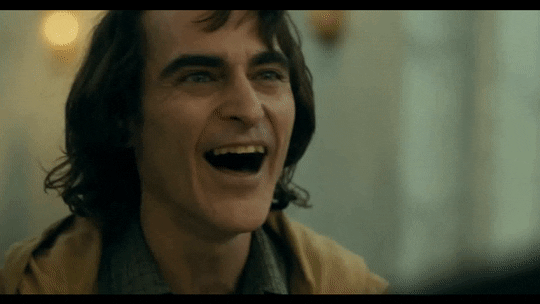
5K notes
·
View notes
